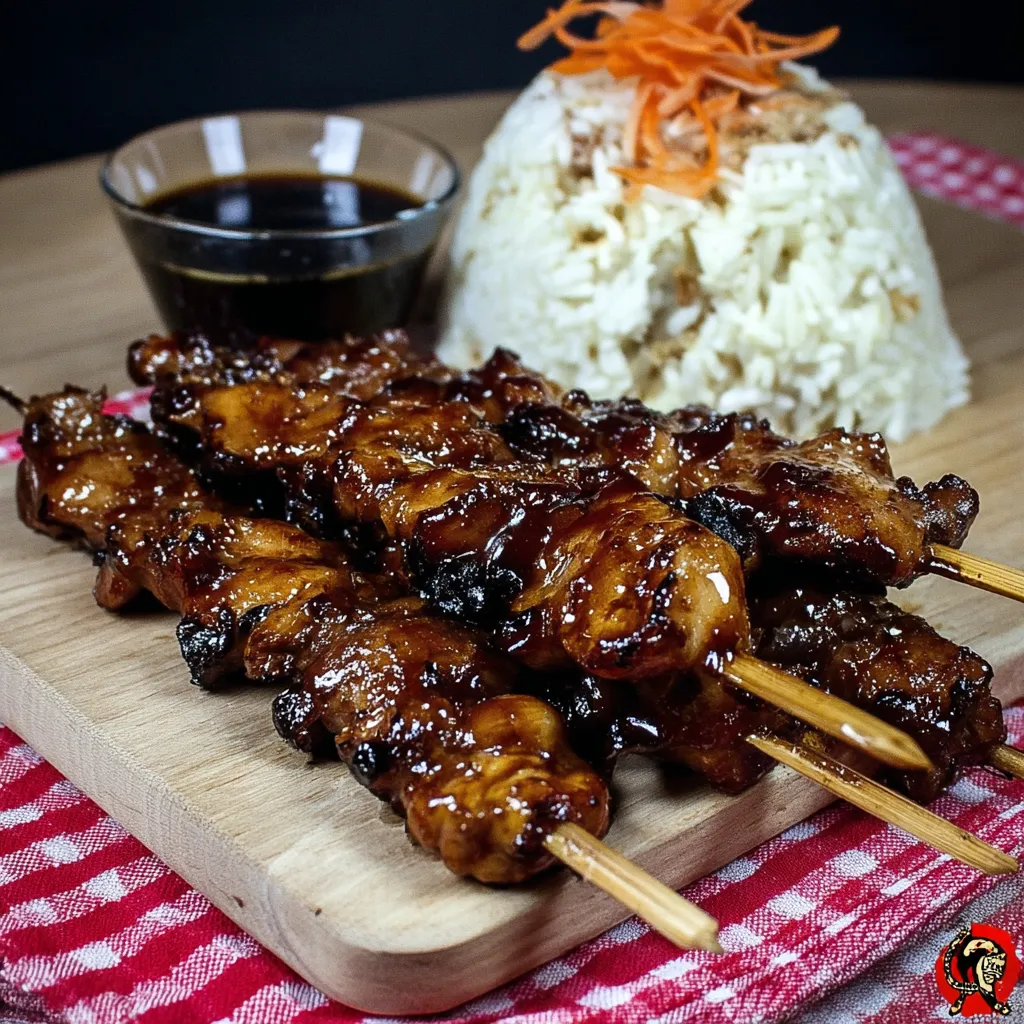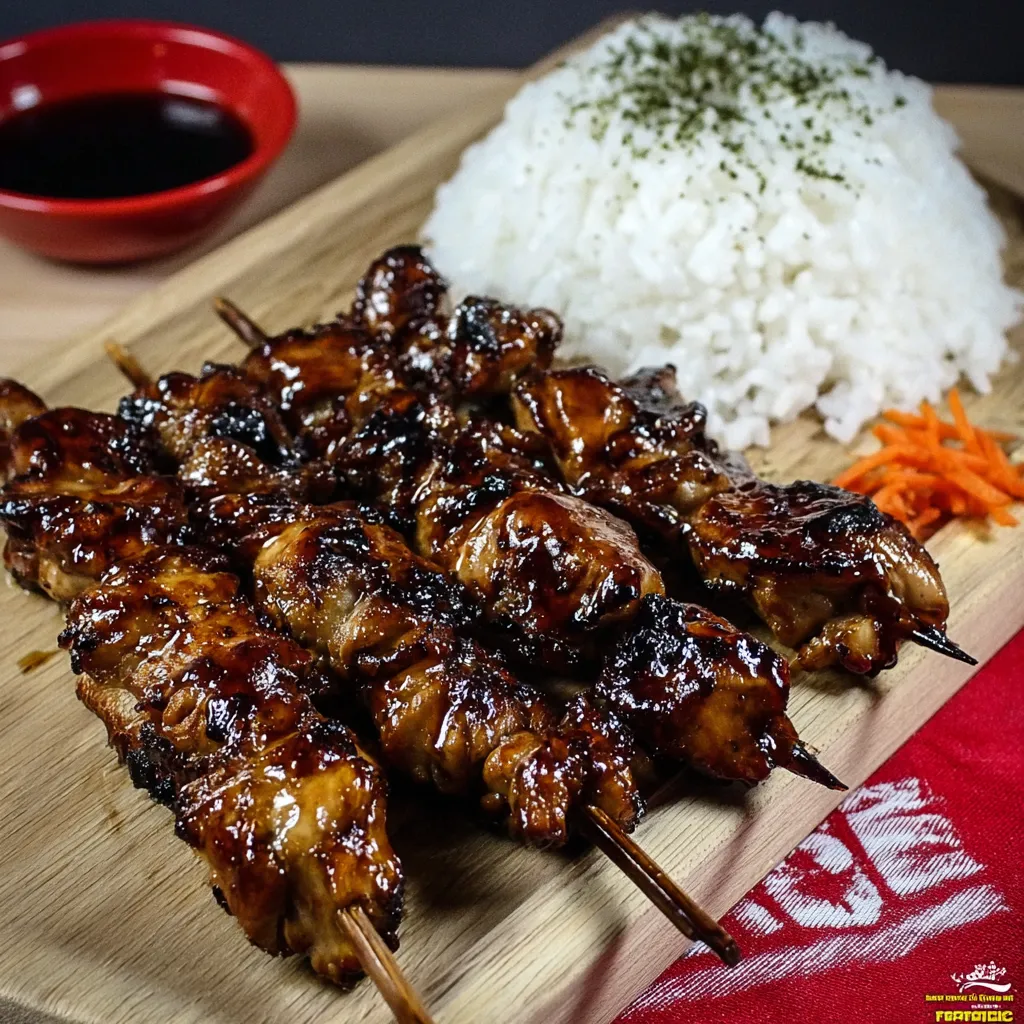 Save
Save
This Japanese chicken yakitori has become my kitchen's secret weapon for impressing dinner guests with minimal effort. The sweet-savory glaze caramelizes perfectly on tender chunks of chicken, creating that authentic Japanese street food experience right at home.
I first made this yakitori when trying to recreate the experience of eating at my favorite izakaya in Tokyo. Now it has become our Friday night tradition, with my family gathering around as I thread the marinated chicken onto skewers.
Ingredients
- Boneless chicken breast or thighs: Perfect protein base that absorbs marinade beautifully. Thighs offer more flavor and moisture while breast is leaner
- Garlic cloves minced: Provides essential aromatic foundation. Use fresh rather than jarred for best flavor
- Ginger minced or powdered: Adds that distinctive Japanese warmth and slight spiciness. Fresh ginger provides the most authentic flavor
- Soy sauce: The umami backbone of yakitori sauce. Choose Japanese varieties like Kikkoman for authentic taste
- Black pepper: Balances the sweet elements with gentle heat
- Water: Dilutes the intensity while maintaining flavor
- Red wine or Mirin: Traditional Japanese rice wine adds depth. Mirin is more authentic but red wine works surprisingly well
- Brown sugar: Creates that signature caramelized glaze. Dark brown sugar offers more molasses notes
- Vinegar: Brightens the rich sauce with acidity. Rice vinegar is traditional but distilled works fine
- Cornstarch: Thickens the sauce to create that perfect clingy glaze that adheres to the chicken
- Wooden skewers: Essential for authentic presentation and easy cooking. Soaking prevents burning
Step-by-Step Instructions
- Prepare the skewers:
- Soak wooden skewers in water for at least 20 minutes to prevent burning during cooking. This step is crucial as dry skewers will scorch and potentially impart an unpleasant taste to your chicken. Make sure they are completely submerged in water.
- Make the yakitori sauce:
- Combine soy sauce, water, red wine or mirin, brown sugar and vinegar in a large bowl. Stir continuously until every sugar granule completely dissolves, creating a smooth base. This versatile mixture serves double duty as both marinade and basting sauce.
- Prepare the chicken:
- Trim away any excess fat, cartilage, or connective tissue from your chicken pieces. These unwanted elements can create a chewy texture in your final dish. Gently pound the chicken with the back of your knife across the entire surface to tenderize and help the marinade penetrate more effectively.
- Cut and season:
- Cut chicken into uniform 2inch pieces for even cooking and easy skewering. Season with black pepper, minced garlic, and ginger, distributing spices evenly through thorough mixing. This layering of flavors is essential to authentic yakitori.
- Marinate the chicken:
- Add 1/4 cup of the prepared yakitori sauce to the chicken and mix thoroughly. Allow to marinate for at least 10 minutes, though longer marination of 30 minutes to 2 hours will develop more flavor. The chicken will gradually absorb the aromatic marinade.
- Thicken the sauce:
- Heat remaining sauce in a small pot over medium heat until it begins to simmer. In a separate small bowl, make a slurry with 1 tablespoon cornstarch and 2 tablespoons of the sauce. Mix until completely smooth with no lumps, then add back to the pot, stirring constantly until thickened to a glossy consistency.
- Skewer the chicken:
- Thread marinated chicken pieces onto prepared wooden skewers in a zigzag pattern, alternating entry points to secure the meat. Leave about 2 inches at the bottom of each skewer as a handle. This technique prevents chicken from spinning when turned during cooking.
- Cook with care:
- Brush skewers generously with yakitori sauce and cook by grilling or broiling at 350°F for approximately 4 minutes per side. Baste frequently with additional sauce to build up layers of flavor and maintain moisture. The chicken is done when it reaches 165°F internally.
 Save
Save
The secret to exceptional yakitori is in the basting technique. I learned from a Japanese chef that multiple thin layers of sauce applied during cooking create that perfect sticky glaze that makes yakitori irresistible. My daughter now requests these "chicken lollipops" weekly!
Recipe FAQs
- → What's the purpose of soaking wooden skewers before cooking?
Soaking wooden skewers in water for 10-20 minutes prevents them from burning when exposed to high heat during grilling or broiling. This simple step ensures your skewers remain intact throughout the cooking process.
- → Can I substitute the red wine in this yakitori?
Yes, traditional yakitori uses Mirin (Japanese rice wine), which is the ideal ingredient. If unavailable, red wine works as a substitute, though the flavor profile will be slightly different. For a non-alcoholic version, you could use a mixture of rice vinegar and a touch of sugar.
- → Why do you pound the chicken before cutting it?
Lightly pounding the chicken surface tenderizes the meat and creates tiny crevices that help the marinade penetrate more quickly and thoroughly. This technique results in more flavorful, juicy, and tender chicken pieces.
- → What's the best way to thread chicken onto skewers?
For best results, thread chicken pieces in a zigzag pattern by alternately pushing the skewer through the top and bottom of each piece. This prevents the chicken from rotating or sliding off during cooking and ensures even exposure to heat.
- → How can I tell when the yakitori is fully cooked?
Yakitori cooks quickly—about 4 minutes per side at 350°F. The chicken is done when it's no longer pink inside but still juicy. Be careful not to overcook, as chicken can quickly become dry and rubbery. The glaze should be caramelized but not burnt.
- → Can I prepare the yakitori sauce in advance?
Absolutely! The sauce can be prepared up to a week in advance and stored in an airtight container in the refrigerator. This makes meal prep easier and allows the flavors to develop even more fully.
